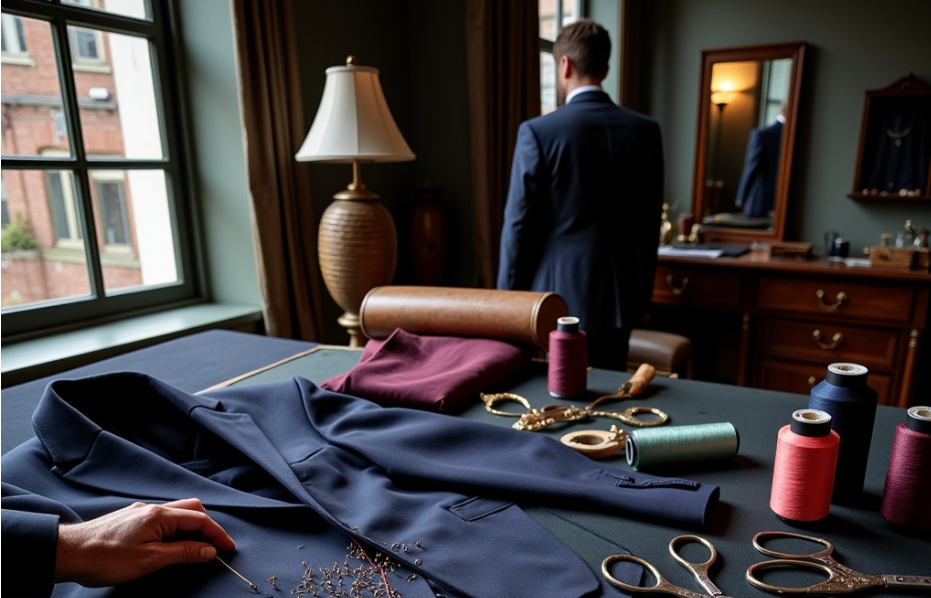Understanding What A Style Guide Is
In the world of fashion, image is everything. From your visual identity to your brand’s tone of voice, consistency is key to making a lasting impression. A Custom Style Guide isn’t just a document—it’s the foundation of a fashion brand’s identity. Whether you’re a new label on the rise or an established name in the industry, having a tailored style guide ensures that every touchpoint—from your website to your Instagram feed—reflects your unique aesthetic.
Understanding What a Style Guide Is
A style guide is a comprehensive manual that outlines the rules for writing, formatting, and visually representing your brand across all platforms. It ensures your brand is always presented with clarity and coherence, no matter who’s creating the content.
For fashion brands, this goes far beyond fonts and logos. It captures the mood, personality, and look that define your collections, campaigns, and customer experience. A custom style guide is built around your brand’s values, tone, and target audience—never one-size-fits-all.
Why Fashion Brands Need a Consistent Identity
In fashion, consistency builds trust and recognition. When your visuals, language, and messaging feel aligned across all platforms, your brand becomes instantly recognizable and easier to remember. Whether a customer scrolls through your Instagram or reads your press release, they should be able to identify your brand in a second.
Without a custom style guide, your brand may appear disjointed—different fonts here, inconsistent messaging there—which can confuse your audience and dilute your impact. Fashion is about storytelling, and a consistent story creates a deeper emotional connection.
Key Elements Found in a Custom Fashion Style Guide
While each fashion brand is unique, most custom style guides include these essential components:
Logo Usage Guidelines
Your logo is your signature. This section ensures it’s always used correctly and consistently:
- Placement and spacing
- Approved color versions
- Background restrictions
- Minimum size
- Incorrect usage examples
Color Palette
Color is powerful in fashion branding. This section defines your visual vibe:
- Primary and secondary color codes (HEX, RGB, CMYK)
- Accent and seasonal colors
- Recommendations for backgrounds, overlays, and contrasts
Typography Rules
Fonts speak volumes about your brand’s style—luxury, edgy, or minimalist?
- Primary and secondary fonts
- Sizing for headlines, body, and captions
- Font pairing options
- Spacing and alignment rules
Image and Icon Guidelines
Fashion is visual. This section keeps your visuals cohesive:
- Preferred photography style (editorial, street style, studio, candid)
- Filters or presets to use
- Composition and model direction
- Icon or illustration style preferences
Voice and Tone
This shapes your brand’s personality in words:
- Brand tone (e.g., empowering, refined, playful)
- Approved phrases and keywords
- Words to avoid
- Adjustments for platforms (casual on social, elevated on your website)
Writing Style Rules
For clear, on-brand messaging:
- Grammar and punctuation preferences
- Formatting (bold, italics, bullet points)
- Capitalization and abbreviation rules
- Date and time format
Benefits of a Custom Style Guide in Fashion
Saves Time
No more back-and-forth about formatting. Everyone from your copywriter to your graphic designer knows what to follow.
Improves Team Collaboration
Especially crucial for fashion teams spread across departments, agencies, or continents. A shared guide ensures everyone works with the same playbook.
Builds Brand Recognition
Fashion thrives on repeat exposure. Consistent tone, visuals, and messaging strengthen brand recall.
Boosts Professionalism
When your look is polished and cohesive, you gain credibility. Clients, partners, and customers take you more seriously.
Reduces Revisions
By following the style guide from the start, content creators spend less time on edits—speeding up campaign rollouts and launches.
Who Should Use a Style Guide?
Not just global fashion houses—everyone benefits:
- Emerging brands building from scratch
- Fashion startups scaling fast
- PR and design agencies working with multiple fashion clients
- Stylists, photographers, and content creators representing the brand
- Influencers or ambassadors promoting your products
Even a solo fashion designer can streamline content creation with a clear guide.
Tips for Creating an Effective Style Guide
- Keep it clear – Avoid jargon. Make it easy for anyone to follow.
- Use visual examples – Before/after shots or do’s and don’ts help explain rules.
- Update regularly – As your brand evolves, refresh your guide to stay relevant.
- Make it accessible – Store it in a shared folder or internal platform.
- Involve your team – Designers and writers can offer practical feedback for improvements.
Using Your Style Guide Across Channels
In fashion, your brand lives across multiple platforms:
- E-commerce websites
- Social media (Instagram, TikTok, Pinterest)
- Lookbooks and press kits
- Email marketing and newsletters
- Runway presentations and packaging
A custom style guide ensures that all these touchpoints tell the same story. Whether someone interacts with your brand online or in print, they should experience the same distinctive style and voice.
Conclusion
In fashion, your brand is more than what you design—it’s how you present, communicate, and connect. A custom style guide is your blueprint for consistency and cohesion. It keeps your visuals sharp, your tone clear, and your message unmistakable.
From defining your visual identity to guiding your brand voice, a well-crafted style guide empowers your entire team to create content that not only looks good—but feels like you. If you’re serious about standing out in today’s crowded fashion landscape, investing in a custom style guide isn’t optional—it’s essential.

